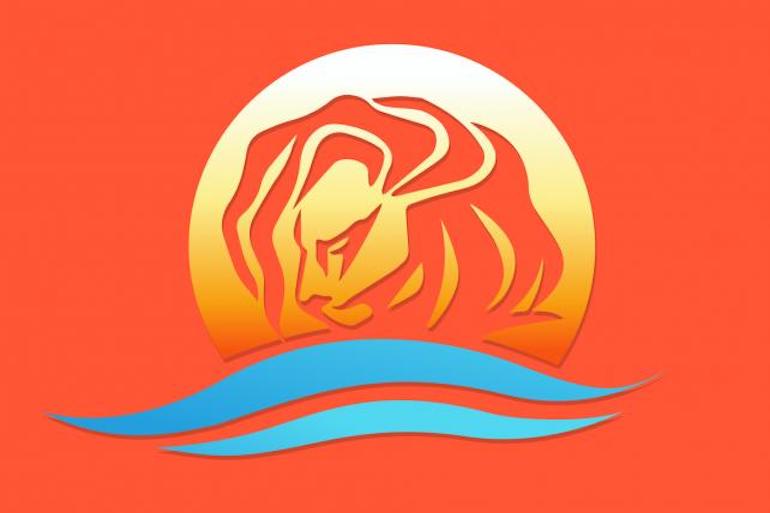(Image credit: Illustration by Tam Nguyen/Ad Age)
By Brian Braiker, editor, AdAge
W. Somerset Maugham was onto something in 1941 when he wrote “the Riviera isn’t only a sunny place for shady people.” While still hilarious in 2018, there was significantly less shadiness – both in conference-goer behavior and as a reprieve from the blazing sun – at the Cannes Lions International Festival of Creativity this year. But don’t take my word for it.
“It’s back to business,” said at least three people to me, verbatim, from different corners of the industry. Those very words were uttered by Jen Wong, the former Time Inc. executive recently tapped by Reddit as its chief operating officer, who reported a flurry of activity in her four days here. Nick Brien, CEO Americas for Dentsu Aegis Network, said as much while holding court at the Ad Age lawn party with two sets of sunglasses clipped to his shirt. Yannick Bolloré, the dashing young chairman and CEO of Havas, described this year’s event as having more gravitas than in recent years, yielding more business, fruitful talks with clients and promising prospects.
OPINION: “I left [Cannes]. Forever.”
All three noted that agency contingencies were smaller by at least a fifth (more so in the case of Publicis, which mostly stayed true to its abstention), but client teams remained level, giving the impression of a brand-heavy Cannes. I’ve been twice now, so I only know what I saw last year and what people tell me: The driveway at the Carlton hotel was noticeably easier to navigate; the crowd palpably thinner. “People are going to bed at 11, taking meetings at nine in the morning,” one agency executive told me.
The Spotify party, with headliner Travis Scott, was surprisingly easy to get into and navigate. Yacht row was conspicuously less populated by ad-tech bros and their boats. There was still extravagance, but the piers resembled a “gap-toothed smile of an industry that’s taken a few punches,” my colleague Jack Neff wrote in our blog.
In short, this was the Diet Coke of Cannes: slimmer, caffeinated, slightly less bad for you.
“All the people who should not be here were not here,” 360i Chairwoman Sarah Hofstetter said to me before the dust had settled. The Carlton driveway may have been empty, but the panels at the Palais were well attended. Fire and Fury author Michael Wolff in conversation with adman Jeff Goodby was full to overflowing. Hofstetter’s own panel had attendees sitting in the aisles.
READ: Which MENA agencies won at Cannes 2018?
Even the winning work felt more grown-up; the theme of doing ‘good’ seems to be sticking. In years past, you could feel awards lust driving a lot of the work centered around fixing the world, creativity editor Ann-Christine Diaz points out to me. Ideas that won big this year – “The Palau Project” and “The Trash Isles” – had true sustainability woven into them.
And yet.
The concierge at Le Grand Hôtel estimated that bookings were down 20 percent. The creatives, by and large, weren’t spending a lot of time on the Croisette, Hofstetter said. They were swimming at St. Tropez; they were lunching at Hotel du Cap. Hofstetter and I debriefed at the Nice airport Thursday as we waited for the Delta flight back to New York. There was a surprising number of industry folks both on our flight and the Air France direct, which left an hour before us.
“Three days is all you need, innit?” asked one British agency creative. “Otherwise, you risk starting to believe this is real life.”
The question is, which three days?
Cannes hadn’t ended yet and already a critical mass of attendees were fleeing. The main event, at least from a gossip’s perspective, had yet to even happen: Former WPP honcho Martin Sorrell was slated to take the stage for an interview with Frenemies author and New Yorker writer Ken Auletta Friday. But, it turned out, even that yielded little in the way of news.
Other hot topics for the week included diversity and discrimination. #MeToo and Time’s Up. AR, VR, XR, MR. Consultancies and viewability. AI and voice.
But maybe the biggest one was anxiety.
“Anxiety around the duopoly was at an all-time high last year,” Tim Armstrong, CEO of Verizon-owned Oath, told me. “This year, it’s two or three times higher.”
The Facebook-Cambridge Analytica imbroglio and brand safety scares on YouTube have taken their toll: eMarketer estimates the two companies will still capture a combined 56.8 percent of US digital advertising dollars in 2018, down slightly from 58.5 percent last year. Brands “are going back to the tele [TV] because it’s safe,” Oath’s Shingy says.
WORLD CUP SPECIAL: Infiniti campaign gives a Q50 if a match ends with this score
It’s not just advertisers who are anxious. Audiences (or ‘consumers,’ if you will) are too. The agency Hearts & Science released a report along with the Center for Humane Technology during Cannes about our device addiction and how to ethically game social media algorithms. We get a dopamine rush from the likes meted out to us; we get fake news confirming our biases. We get Donald Trump threatening to nuke North Korea off the planet one day and saluting Kim Jong-un’s goons the next.
Shingy’s keynote was about this very tension between anxiety and trust. How can brands and their agencies enter the fray in a way that’s both ethical and effective? Brands care. Or at least they say they do.
Other Cannes attendees were slightly more gimlet-eyed. “It’s all so fake and crazy,” one vendor said about the Lions. “But I’ll take the money.”






